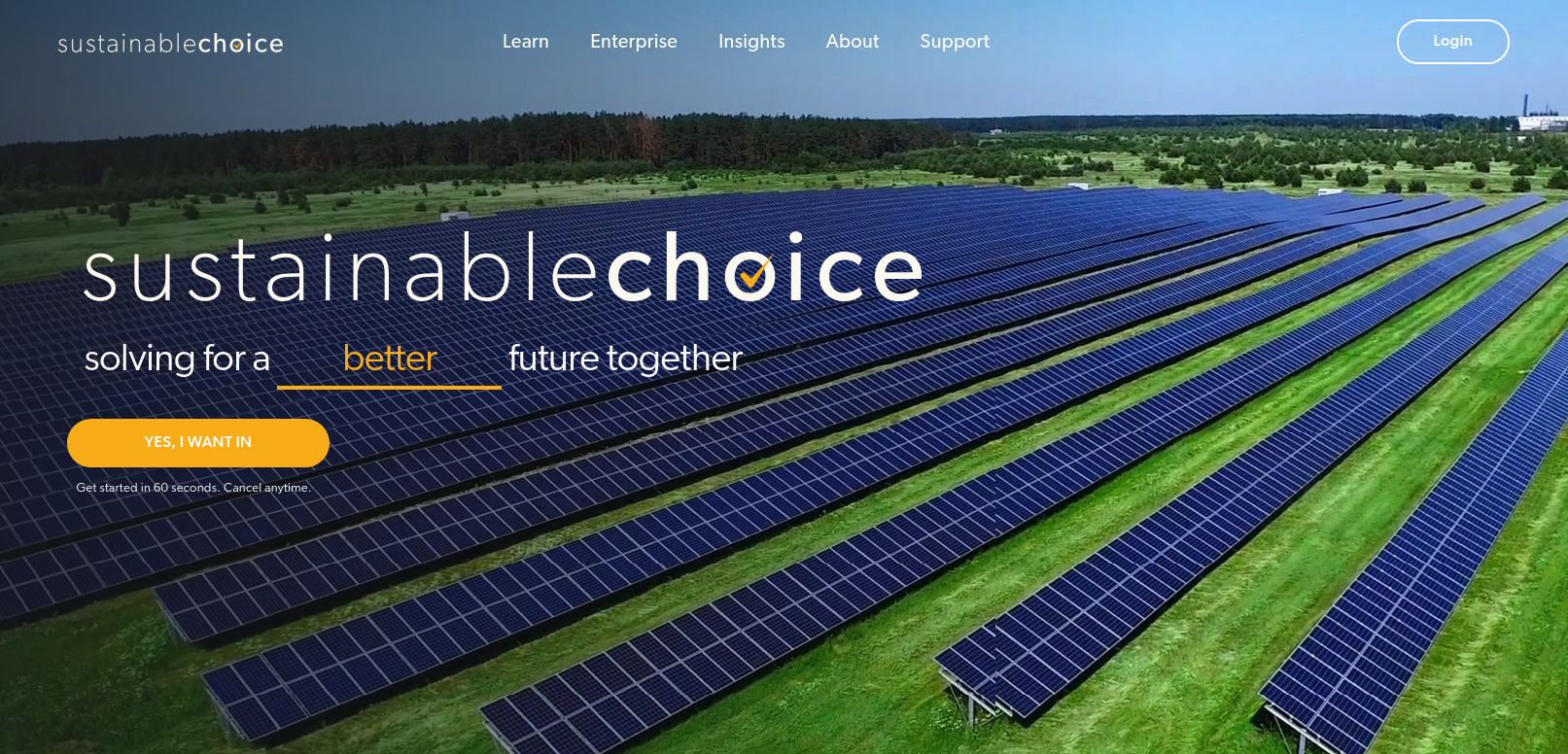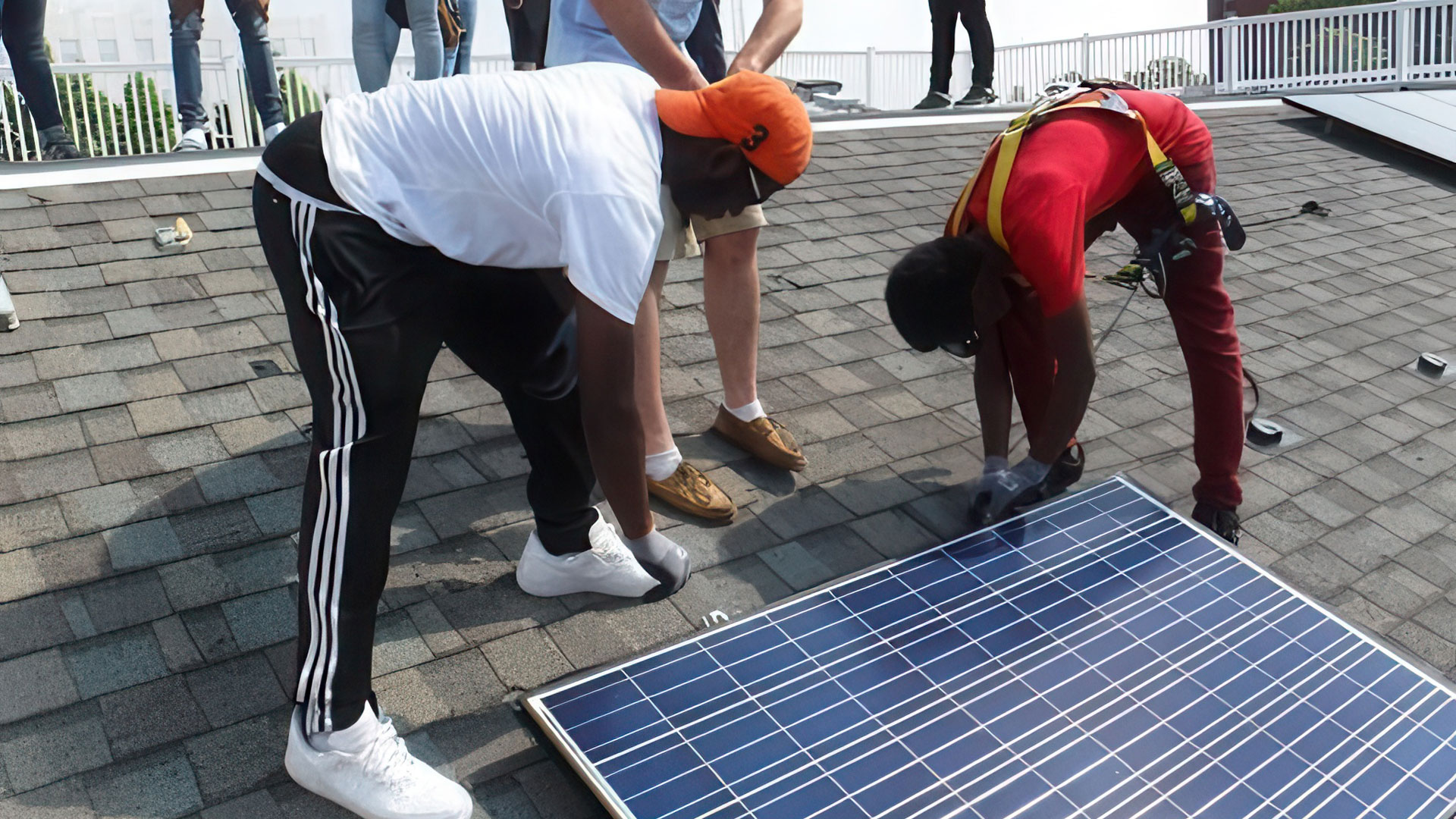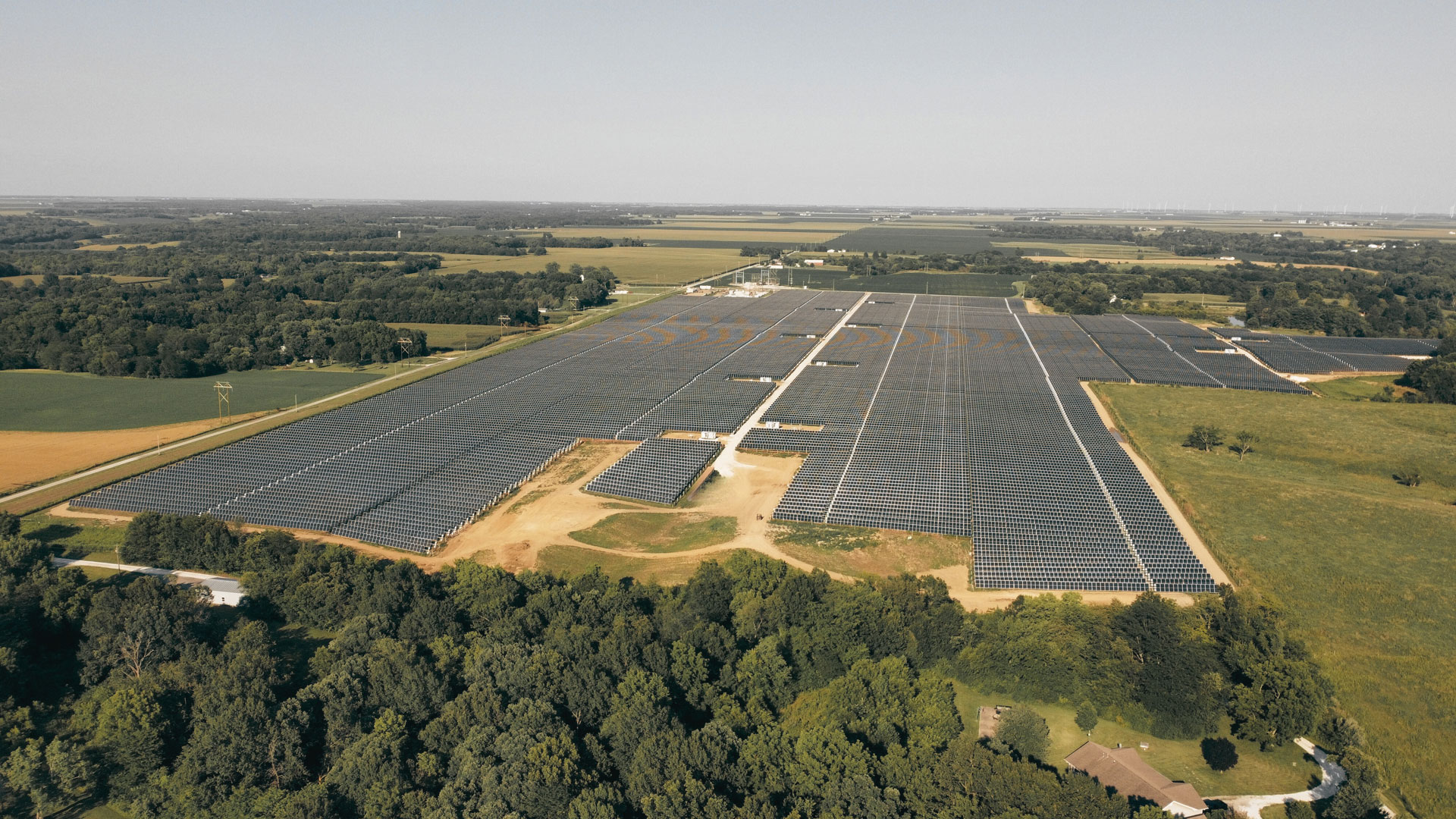Message from the CEO
As the energy landscape continues to shift, one thing remains clear: renewables must be built into every part of our energy strategy. At Sol Systems, we believe that long-term strength, reliability, and impact require deliberate planning and a forward-looking approach.
In this edition of Sol SOURCE, we explore the critical role of clean energy procurement in strengthening supply chains and supporting broader corporate goals. Our feature white paper, Charting Your Path Toward Clean Energy Procurement: A Strategic Roadmap for Corporate Energy Buyers, provides a practical framework to help organizations navigate the complexities of the energy transition. From defining the business case to executing a portfolio of solutions, the paper is intended to support better, faster, and more informed decision-making.
At Sol, we are focused on delivering value through partnerships, investment in local communities, and the development of clean energy infrastructure built for the long term. We continue to see how a clean energy mix can drive decarbonization, improve operational stability, and create financial and strategic advantage.
I am grateful for our team, our partners, and our customers who continue to build with us. Thank you for your trust and collaboration as we work toward a cleaner, stronger, and more sustainable energy future.
Check out our video highlighting how Sol, REI, and Nester are creating local impact through solar energy and strengthening supply chains.
Trends & Observations
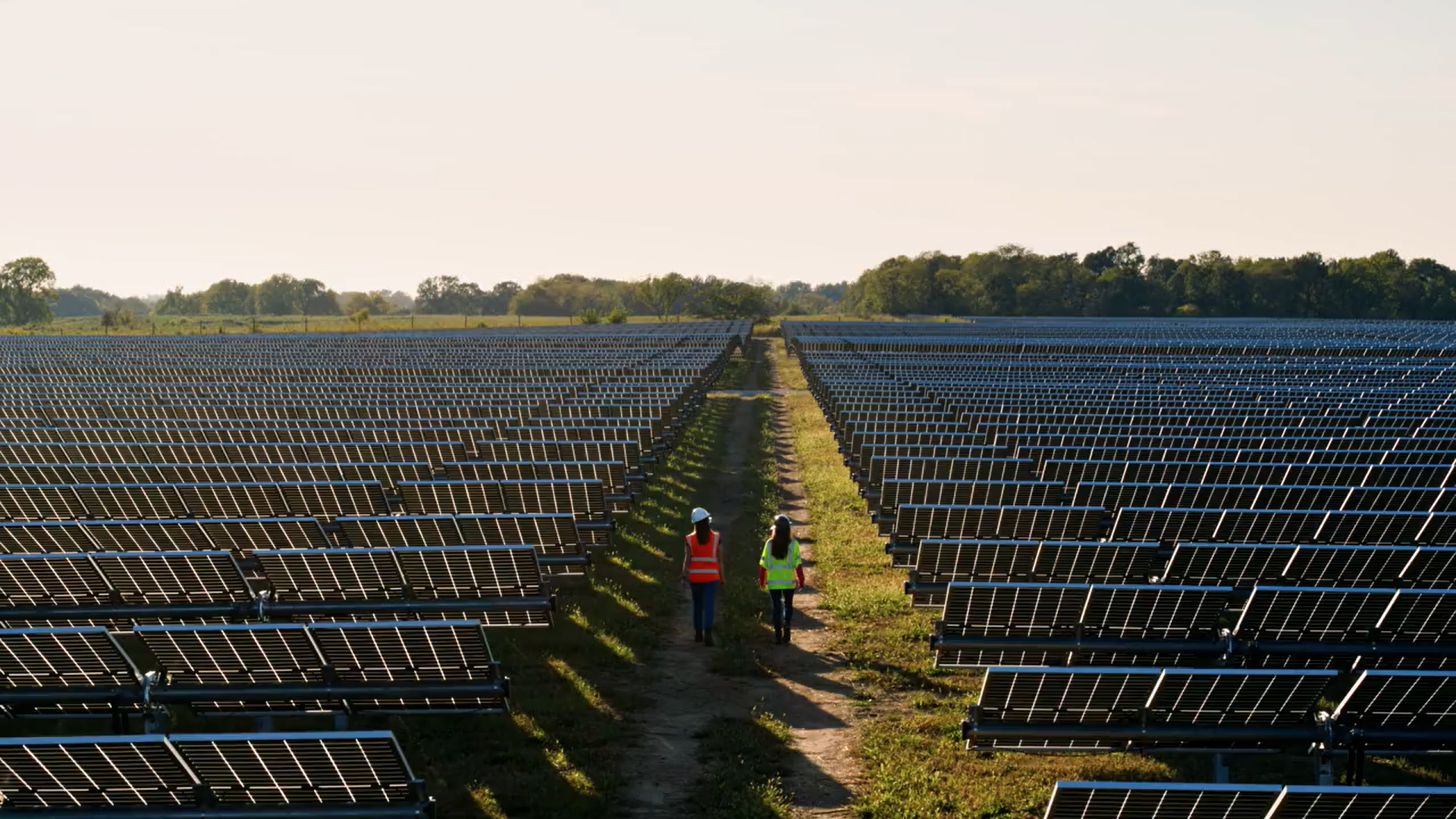
Charting A Path Toward Clean Energy Procurement
The Challenge Ahead
Electricity demand is surging across the U.S., driven by data center expansion, manufacturing growth, and broad electrification efforts. As energy needs accelerate, companies are under pressure to rethink how they source and manage power. There is no one-size-fits-all solution. This is why Sol Systems created Charting Your Path Toward Clean Energy Procurement, a strategic roadmap designed to help organizations align their energy strategies with business goals, financial priorities, and carbon reduction commitments.
A Portfolio Approach to Clean Energy Procurement
The paper presents a flexible, portfolio-based framework that walks through key pathways including unbundled and project-specific RECs, onsite solar, VPPAs, community solar, and clean energy tax investments. Each solution is examined through the lenses of complexity, timing, scale, and emissions impact, giving companies a practical toolkit to build a customized strategy. The guide also addresses critical factors such as stakeholder alignment, policy evolution, and advanced concepts like emissionality.
Start Where You Are, Build As You Go
Companies do not need to have all the answers on day one. They need a plan that reflects where they are today, and where they want to go. With clear frameworks and actionable insights, this paper demystifies the procurement process and supports momentum at every stage of the journey.
Download the white paper to start charting your organization’s path to a resilient, low-carbon energy future.
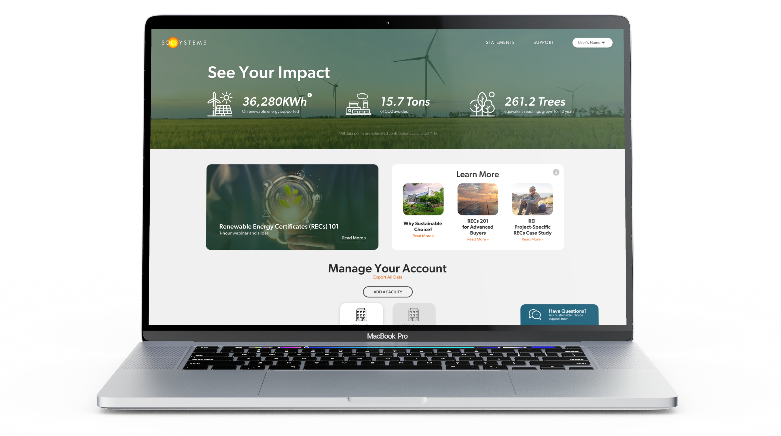
Why Renewable Energy Certificates (RECs) Matter and How You Can Take Action Today
Meeting the U.S. goal of 80% emissions-free electricity by 2030 is not just ambitious—it is essential. While that goal will require bold investments in new clean energy infrastructure, there is another equally important tool already within reach: Renewable Energy Certificates (RECs).
RECs represent the environmental benefits of renewable electricity, such as solar or wind, and are a way to ensure your energy dollars support clean power generation. Today, renewable energy makes up just over 24% of the U.S. electricity energy mix. This marks a significant increase from previous years, reflecting the growing contribution of renewables to the nation’s energy portfolio. However, that still leaves a significant gap to close and a huge opportunity for action.
Sustainable Choice, a service by Sol Systems, is designed to empower businesses and individuals to participate in the clean energy transition. Whether you are a large company addressing Scope 3 emissions or an individual looking to meet personal sustainability goals, Sustainable Choice offers a simple, accessible path.
Here’s How It Works:
- Purchase RECs with impact: Every REC supports renewable energy production without the need for rooftop solar or major investment.
- Tailored for all: From individuals to major corporations, Sustainable Choice provides customized solutions to match your goals.
- Track your impact: Participants receive clear emissions equivalency statistics to understand the results of their REC purchase.
- Give back as you go: A portion of each purchase helps fund environmental and community impact projects in underserved areas.
RECs purchased through Sustainable Choice are more than just credits. They are financial tools that directly support new and existing renewable energy projects, helping to build a more sustainable energy future.
Ready to get started?
Sustainable Choice is offering 1 month free to new participants. No strings attached, just impact. Join us and take a step toward a cleaner energy future.
Want to learn more first?
Visit www.thesustainablechoice.com to explore how the program works, browse FAQs, and see how your participation can make a difference.
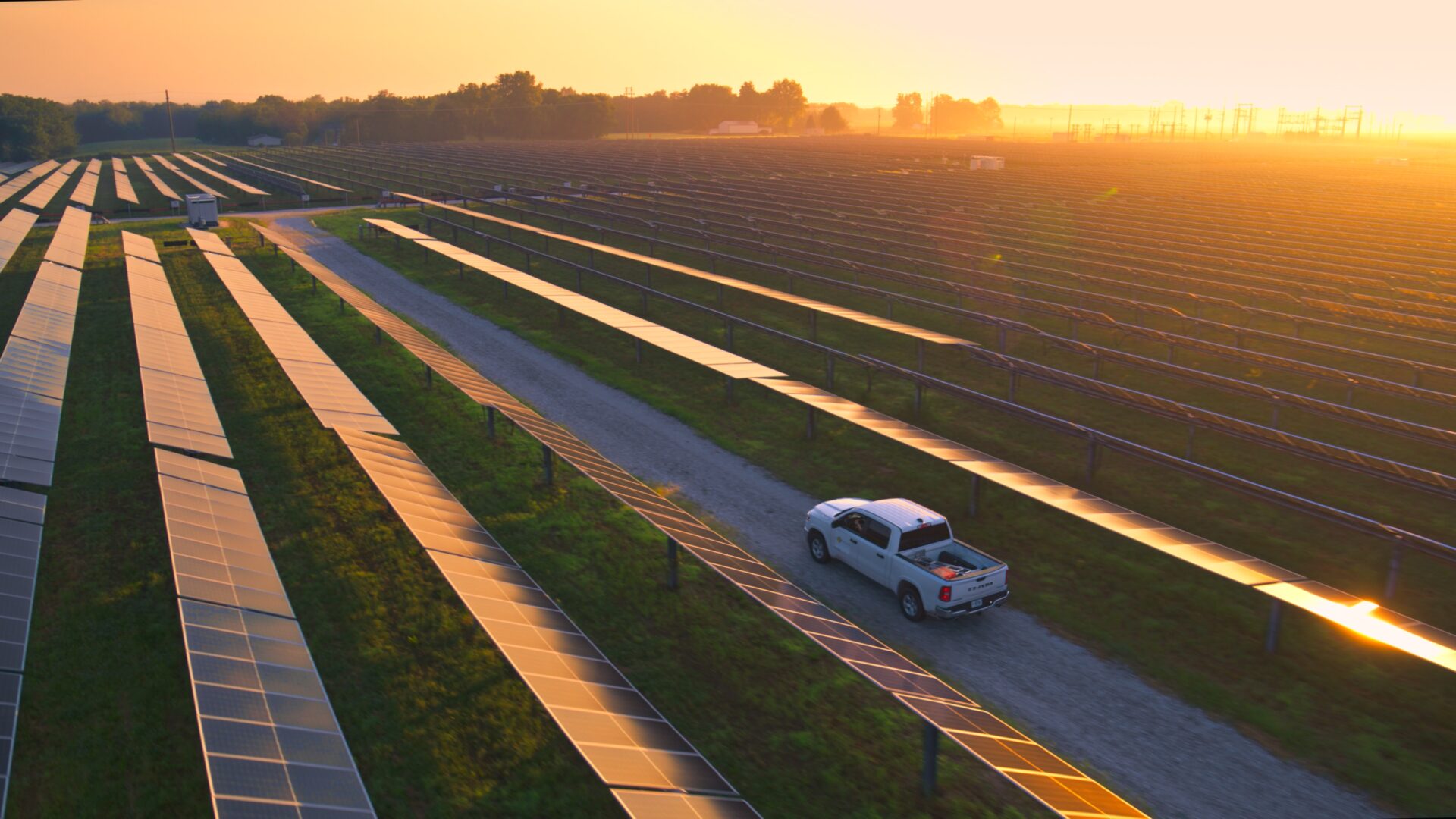
Welcome to Morgan County, IL: Meet Our New Community Impact Partners!
We are excited to announce the first group of community partners in Morgan County, Illinois, home of our Prairie Creek Solar project.
These partnerships build on the foundation set in 2021, when we announced our first power purchase agreement partnership–one of the country’s largest–with a groundbreaking strategy to fund investments that bolster the community, environmental, and social impact over the lifecycle of solar energy projects. As part of that agreement, Sol Systems (Sol) committed to engaging with and investing in organizations that are trusted in their communities to implement initiatives that are tailored to specifically benefit under-invested communities and enable their participation in building America’s energy future.
Since then, we have funded multiple organizations in both rural and urban communities across the U.S. Eastern Seaboard, including Pennsylvania, Maryland, Virginia, Appalachia, and Washington D.C. The funding empowered these communities to provide energy efficiency and home repair programs, solar-plus-storage community resilience hubs, foundational job training, education, and wrap-around support service. Sustained by the successes and lessons learned to date, as our solar projects become commercially operational, we focus on investing in the communities where our projects are based. In Morgan County, Illinois, we are proud to partner with local groups that share our commitment to community focusing on resilience and sustainable growth.
Announcements
State Markets
(Click a color for more info)
Regional & Federal Updates
PJM – FERC Approves New Tools to Speed Interconnection and Boost Grid Capacity
As electricity demand grows across PJM’s 13-state footprint, the grid operator is taking steps to accelerate the deployment of new generation and storage. On 2/11/2025, the Federal Energy Regulatory Commission (FERC) approved two PJM proposals aimed at increasing near-term capacity while longer-term reforms play out. The Reliability Resource Initiative (RRI) allows shovel-ready, high-reliability resources to connect faster by moving them into Transition Cycle #2 of PJM’s reformed interconnection process. The second initiative streamlines the use of Surplus Interconnection Service (SIS), or the unused portion of interconnection service for a facility that cannot or does not operate continuously, enabling developers to use that surplus without reentering the full interconnection queue. This change could significantly accelerate the deployment of certain resources, particularly storage, for planned sites with surplus capacity.
These efforts build on PJM’s recent work to further modernize its queue. Back in November 2024, PJM’s Markets and Reliability Committee endorsed a proposal to expedite Replacement Generation Interconnection Requests—requests tied to retiring generators seeking to reuse existing capacity interconnection rights (CIRs). Filed with FERC on 1/31/2025, the proposal outlines a separate, parallel process to PJM’s current three-phase study cycle, with the goal of providing interconnection agreements within 8 to 10 months. Together, these efforts signal a growing urgency within PJM to address bottlenecks and keep pace with reliability needs amid a rapidly changing energy mix.
The high prices of PJM’s 2024 Base Residual action will begin to impact states across the region’s footprint this summer. As elevated prices filter through wholesale markets to customer bills, policymakers are increasingly demanding transparency and accountability from PJM and market participants. The rising financial burden has sparked concern over whether current capacity market structures are aligning with state energy goals, and multiple state representatives within PJM are considering bills that would mandate public utilities report every vote they cast at the RTO, with some also requiring a description of how those actions would benefit ratepayers.
MISO – New Tools and Reforms Target Supply Shortfalls
Facing mounting concerns about a near-term supply deficit, MISO has pushed a series of reforms aimed at speeding up interconnection and boosting capacity. On 3/17/2025, MISO filed its Expedited Resource Adequacy Study (ERAS) proposal with FERC, requesting approval by 5/17/2025. ERAS would create a fast-track queue process for resources that support reliability, helping to bring new supply online more quickly. MISO is also preparing to implement its queue cap—a limit on the total gigawatts of interconnection requests allowed in each study cluster—starting in Fall 2025. After rejecting an earlier version, FERC approved the revised cap on 1/30/2025, stating it would ensure a more transparent and timely interconnection process.
Meanwhile, MISO is advancing efforts to better value storage as it transitions to Direct Loss of Load Accreditation (DLOLA). At a November 2024 stakeholder meeting, MISO presented three possible storage dispatch strategies—early, even loss, and blended—and is now refining its modeling to potentially increase accreditation for solar-plus-storage. Additionally, on 11/13/2024, FERC approved the Joint Targeted Interconnection Queue (JTIQ) framework between MISO and SPP, greenlighting $1.8 billion in transmission upgrades to support 29 GW of new generation across the seam, with costs initially covered by transmission owners and recovered over 20 years.
SPP – Market Integration and Interconnection Reform Continue
In a unanimous decision on 3/14/25, FERC upheld SPP’s transmission rules supporting the Southeast Energy Exchange Market (SEEM), rejecting claims from clean energy groups that the rules restrict market access. While a 2023 D.C. Circuit Court ruling had questioned FERC’s prior approval, the Commission reaffirmed that SEEM’s bilateral trading structure meets or exceeds open access standards. Launched in 2022, SEEM enables 15-minute bilateral trading using available transmission capacity among participating utilities.
On 1/16/2025, FERC approved the Markets+ tariff, a voluntary day-ahead energy market developed by SPP and over 30 Western entities. Scheduled to launch in Q2 2027, Markets+ allows participants to trade energy while retaining local control over resource adequacy and planning—bringing the West closer to coordinated operations. On the interconnection side, SPP introduced two fast-track proposals during its November Resource Adequacy and Energy Assessment Liaison Committee meeting: Surplus+, which would allow expedited upgrades with generator interconnection agreements (GIAs) in 60–90 days, and a new ERAS process modeled after MISO’s. While both aim to prioritize projects meeting resource adequacy needs, some stakeholders have raised concerns over fairness and discrimination.
The Brattle Group presented its updated Future Energy & Resource Needs Study (FERNS) to SPP on 3/18/2025, outlining a roadmap for maintaining cost-effective resource adequacy through 2050 amid high load growth and increasing renewable penetration. The study concludes that SPP can meet future energy needs affordably if existing fossil-fuel capacity is retained or replaced for reliability and if sufficient new resources, namely solar and storage, are added.
Federal Updates
Trade
The start of 2025 has brought significant changes to federal energy and trade policy with direct implications for clean energy markets. On 2/1/2025, President Trump announced a new round of tariffs: a 25% tariff on imports from Canada and Mexico, and a 10% tariff on imports from China, though Canadian energy resources received a reduced rate. After an initial delay, the tariffs went into effect on 3/4/25 with China’s rate increased to an initial 20%.
Shortly after, on 2/13/2025, the White House launched the Fair and Reciprocal Plan to correct “imbalances in internal trade and ensure fairness across the board.” These tariffs would’ve imposed duties up to 84% on importers from various countries and were originally planned to go into effect on 4/2/25 until their announcement prompted a large diplomatic pushback. President Trump issued a 90-day pause on reciprocal tariffs with exception of China, whose tariff rate increased to 145%.
The respective tariff rates build on the Commerce Department’s Solar 3 Antidumping Preliminary Determination, which took effect on 12/4/2024. Solar cells or modules made with cells from Cambodia (~117%), Malaysia (~18%), Thailand (~58%), and Vietnam(~271%) are subject to steep antidumping duties – much higher than industry expectations. These rates, combined with new tariffs, are expected to create cost pressures and supply challenges for solar developers sourcing from Asia.
Complicating the supply challenge, the Department of Commerce issued a steep tariff on solar cells from Southeast Asia in its 4/21/2025 final duty determinations against panel makers in Malaysia, Cambodia, Thailand, and Vietnam for shipping panels priced below their cost of production and of receiving unfair subsidies that make American goods uncompetitive. For the tariffs to be finalized, the International Trade Commission must vote in June on whether the industry was materially harmed by the dumped and subsidized imports.
Another investigation in energy supply chains was issued by Executive Order on 4/15/2025, which instructs the Commerce Department to self-initiate a Section 232 investigation on critical minerals and their derivative products. The investigation will determine whether imports of processed critical minerals and their derivative products “threaten to impair national security.” Once the Commerce department initiates the investigation, a final report of their findings and recommendation will be submitted within 180 days to the President.
IRA
Meanwhile, the IRS and Treasury finalized guidance for the Section 45Y Production Tax Credit (PTC) and 48E Investment Tax Credit (ITC) – the new tech-neutral credits created by the Inflation Reduction Act. Published on 1/15/2025, the rule clarifies that facilities placed in service after 12/31/2025, will qualify if they produce electricity at zero or negative greenhouse gas emissions rates, providing a long-term incentive framework as developers navigate shifting trade policy.
In March 2025, a coalition of 21 House Republicans, led by Rep. Andrew Garbarino (R-N.Y.), voiced opposition to repealing clean energy tax credits enacted under the Inflation Reduction Act (IRA). In a letter addressed to House Ways and Means Committee Chair Jason Smith, they called for a “targeted and pragmatic” approach to any reforms in the energy tax code, citing risks to domestic energy investment and potential cost increases for American consumers. Their concerns gained further traction in April, when four Republican senators urged Senate Majority Leader John Thune to retain the IRA’s clean energy incentives in the upcoming budget reconciliation bill.
Solar Chatter
Hear what people are saying about important industry topics
Federal Pushback on NY and VT Energy Policies:
President Trump has declared a national energy emergency, directing the DOJ to challenge state-level climate laws like New York’s and Vermont’s “climate superfund” policies. His administration argues such laws overstep federal authority and plans to push back on zero-emission targets. At NARUC, Trump energy advisor-turned-lobbyist Michael Catanzaro warned state regulators of expected pressure to align with federal goals, raising concerns over states’ ability to maintain binding climate commitments. (White House) (E&E News)
Reliability in the RTOs/ISOs:
MISO, SPP, and PJM are advancing initiatives to fast-track thermal resource accreditation through ERAS and RRI. These efforts aim to address reliability concerns by enabling queue-jumping, potentially disadvantaging solar and storage projects that currently dominate interconnection queues. Although existing projects aren’t being re-studied, evaluation standards may shift. Clean energy groups, including SEIA, have filed for a rehearing of FERC’s RRI approval, citing equity and transparency concerns. (PJM) (MISO) (SPP) (Utility Dive)
The Challenge of Predicting US Electricity Demand:
After years of stagnation, electricity demand is projected to increase, but innovation and resource planning have yet to determine by how much. A new study via Duke University finds data centers and other sources of large demand have untapped flexibility to lower power use for limited stretches, and new large language model, Deep Seek, has shown robust performance and higher energy efficiency. An April IEA report found that fears about AI speeding up climate change “appear overstated.”
(IEA) (Duke University) (Axios)
ESG In Focus:
BlackRock, Vanguard and State Street asked a federal court in Texas to dismiss a 13-state lawsuit accusing the top fund managers of conspiring through climate activism to discourage coal output. The filing to dismiss argues that the allegations rest on “half-baked and untested” legal theories. The case was launched by conservative lawmakers who allege the firm’s cooperation in industry net-zero group counts as collusion and defrauds investors. (Reuters) (ESG Dive)
Educational Spotlight
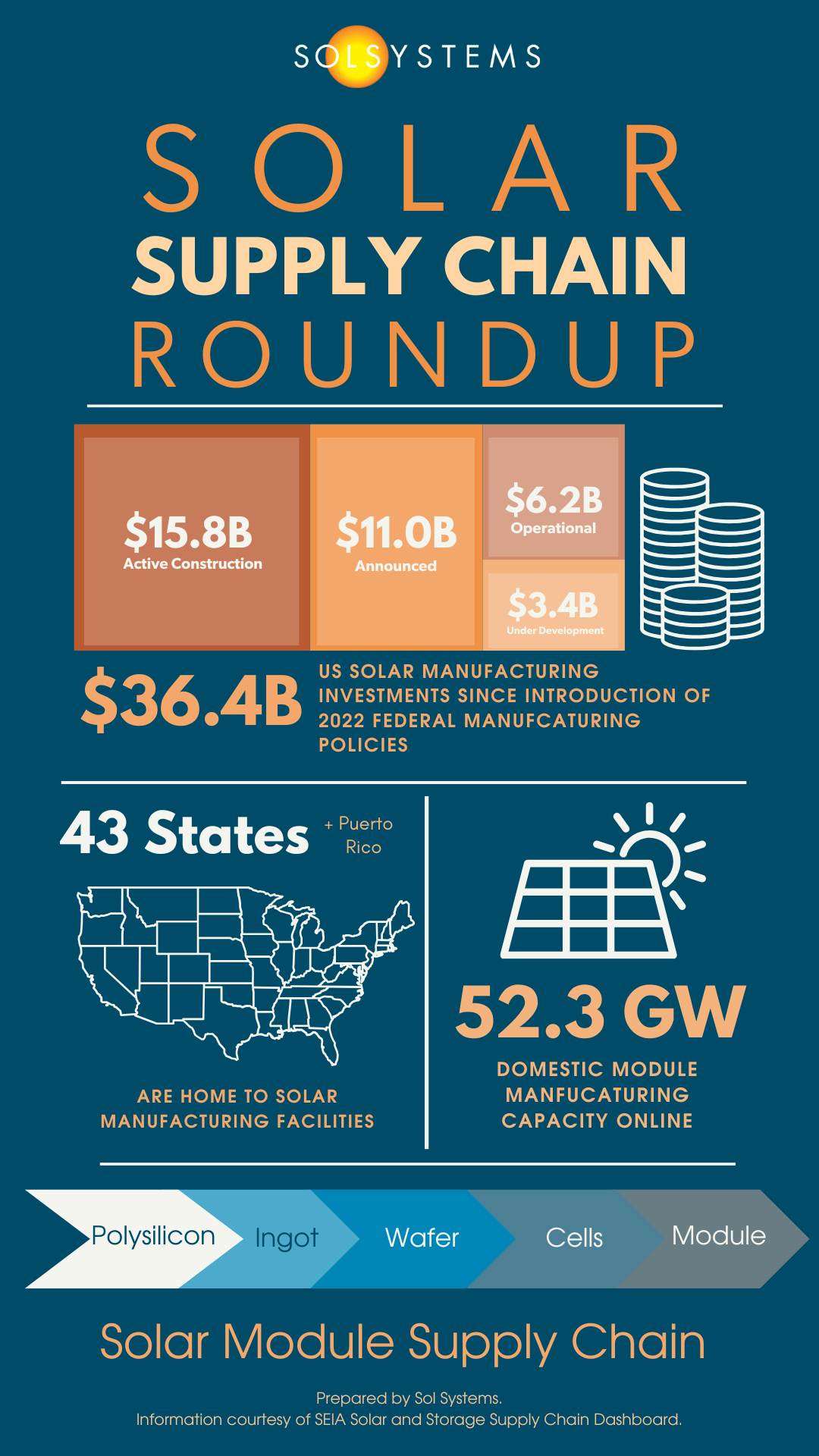
The Sol SOURCE is a publication that the Sol Systems team distributes to our network of customers and solar stakeholders. This publication contains current trends, expert observations, and statistics from real-life renewable projects. The news and resources reflect information collected from trusted industry sources and interviews with our team.
